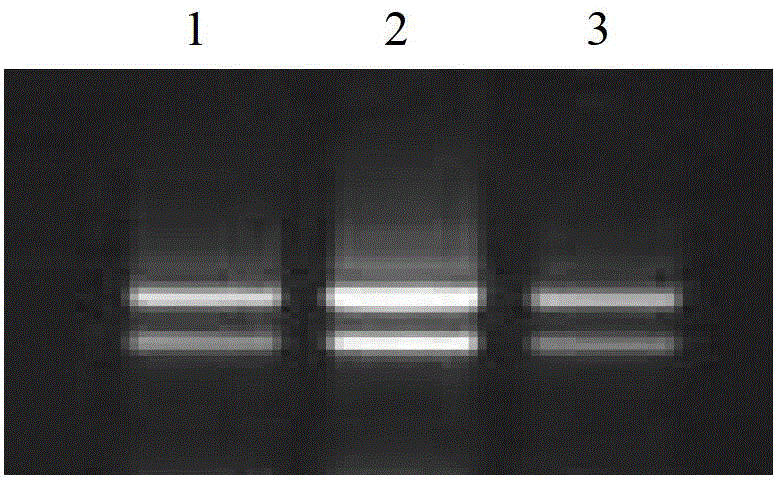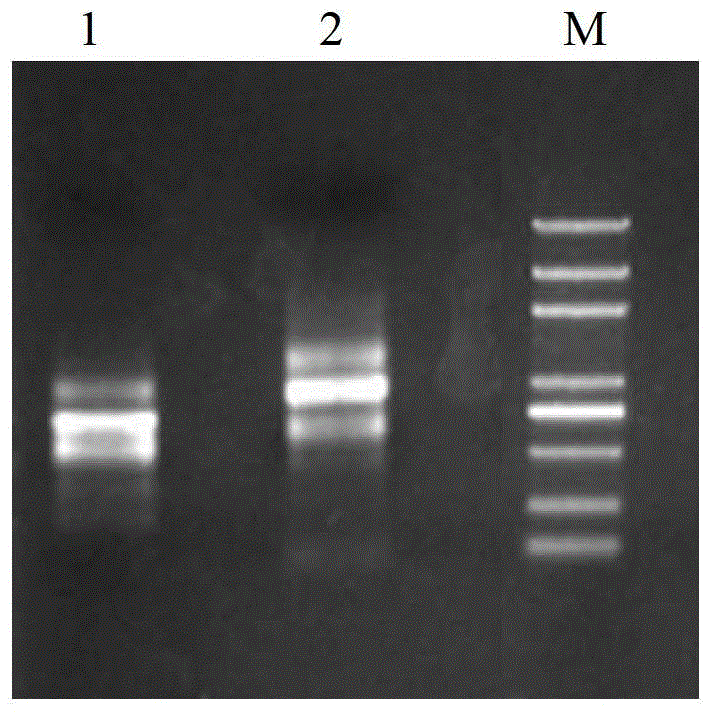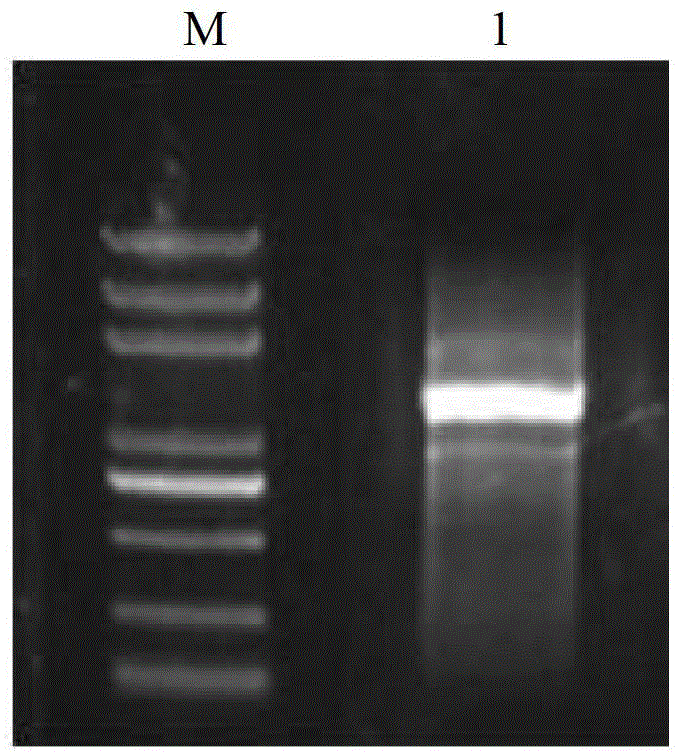Plant salt resistance related protein, and coding gene and application thereof
A coding and gene technology, applied in the direction of plant gene improvement, application, plant peptides, etc., can solve problems such as complex mechanism
- Summary
- Abstract
- Description
- Claims
- Application Information
AI Technical Summary
Problems solved by technology
Method used
Image
Examples
Embodiment 1
[0058] Example 1. Obtaining the full-length cDNA sequence and genome sequence of the gene Lc9230 related to salt resistance of Leymus chinensis
[0059] 1. Cloning of the 5' end sequence of Lc9230, a salt-resistance-related gene of Leymus chinensis
[0060] 1. Plant material processing and total RNA extraction
[0061] The seedlings of Leymus chinensis (Trin.) variety Zhongke No. 2 (Institute of Botany, Chinese Academy of Sciences) were used as materials, and total RNA was extracted after 6 hours of salt stress treatment, and detected by 1% agarose gel electrophoresis. The results are as follows: figure 1 shown. The extracted RNA has two obvious electrophoresis bands, which are 28S RNA and 18S RNA from top to bottom, indicating that the total RNA with higher purity and integrity has been obtained.
[0062] 2. Cloning of the 5' end sequence of Lc9230, a salt-resistance-related gene of Leymus chinensis
[0063] Using the total RNA of Leymus chinensis seedlings subjected to sa...
Embodiment 2
[0083] Example 2. Expression pattern and tissue specificity analysis of Lc9230 gene under salt stress conditions
[0084] Leymus chinensis (Zhongke No. 2) seedlings grown normally for 4 weeks were subjected to salt stress (400mM NaCl). The stress treatment time was 0, 1, 3, 5, 8, 12, 24 hours. The total RNA of Leymus chinensis seedlings treated above was extracted, and the expression patterns of Lc9230 gene under different stress conditions were analyzed by RT-PCR method. The sequence of primers for amplifying the Lc9230 gene is 5'-GGACGACGACCATCAATC-3' (position 5-22 of sequence 2) and 5'-CTTCACGCCGAAAGGACA-3' (reverse complementary sequence of position 851-868 of sequence 2); reaction The conditions are 94°C for 4 minutes; 94°C for 30s, 56°C for 30s, 72°C for 30s, 30 cycles; 72°C for 10min. Using Actin as the internal reference gene, the primer sequences for amplifying internal reference Actin were 5′-GTGCTTTCCCCTCTATGCAAGTGGT-3 and 5′-CTGTTCTTGGCAGTCTCCAGCTC-3′; the react...
Embodiment 3
[0088] Example 3, Subcellular Localization of Lc9230 Gene
[0089] The Lc9230 gene cDNA (sequence 2) amplified in the above-mentioned Example 1 was used as a template, and the upstream and downstream primers 5'-G with restriction sites Bgl II and Spe I at both ends were respectively used AAGATCT GATGGGGGGACGTGTCG-3' (the underlined part is the Bgl II recognition site, and the following sequence is the 145th-160th position of sequence 2) and 5'GG ACTAGT CCACCGCTTGTCGCC-3' (the underlined part is the Spe I recognition site, and the subsequent sequence is the reverse complementary sequence of the 731-745th position of sequence 2) was amplified by PCR to obtain the target band with a size of 617bp. The target band was double-digested with restriction endonucleases Bgl II and Spe I. With the expression vector pCAMBIA 1302 (Robert et al. (2006) A hypermorphic mutation in the protein phosphatase2C HAB1 strongly affects ABA signaling in Arabidopsis FEBS Lett.580, 4691–4696, which c...
PUM
 Login to View More
Login to View More Abstract
Description
Claims
Application Information
 Login to View More
Login to View More - R&D Engineer
- R&D Manager
- IP Professional
- Industry Leading Data Capabilities
- Powerful AI technology
- Patent DNA Extraction
Browse by: Latest US Patents, China's latest patents, Technical Efficacy Thesaurus, Application Domain, Technology Topic, Popular Technical Reports.
© 2024 PatSnap. All rights reserved.Legal|Privacy policy|Modern Slavery Act Transparency Statement|Sitemap|About US| Contact US: help@patsnap.com










